November 22, 2020 - Viktor Simunic, an enterprising independent young councillor in Zagorje has been comparing Croatian bureaucracy with countries of a similar size. Houston, we have a problem.
I don't think I am divulging any State secrets when I write that Croatia has a very bloated bureaucracy. In an age of economic downturn and belt-tightening, savings in bureaucratic efficiency would be an obvious place to start. Indeed, this excellent recent big data analysis a few months ago showed how Croatia could save 1.29 billion kuna (170 million euro) a year simply by merging municipalities. A move that would also improve efficiency.
A move that will almost certainly not happen because... well, this is Croatia.
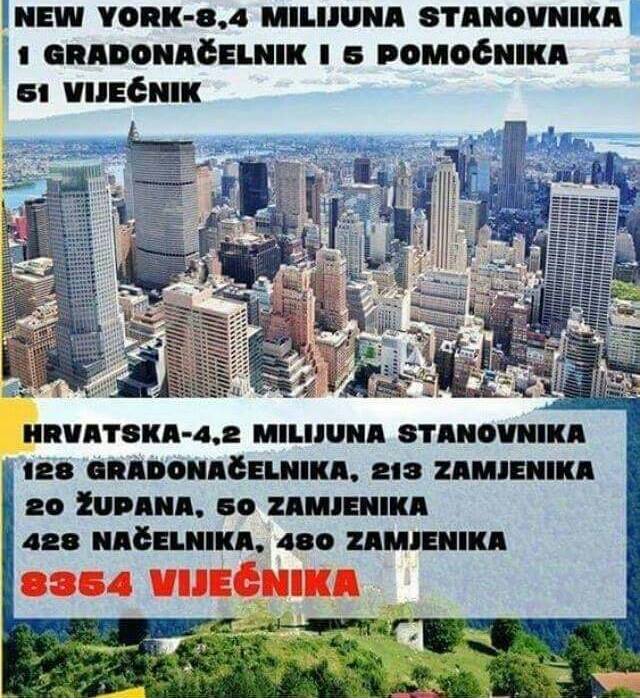
A popular comparison to explain the absurdity of Croatia's bureaucratic overreach and jobs for the cousins - and one I have used before - is comparing the number of people it takes to run New York City, which is twice the size of Croatia. Obviously, running a big city and a country are very different, but what takes 51 city councillors in New York to look after the needs of a population twice the size of Croatia - a task left to a heroic 8,354 councillors in Croatia.
And while the picture above makes a point, it is obviously not a true comparison of like versus like, which is why I found the analysis I came across today to be rather interesting. I have never come across Viktor Simunic before, but his Facebook profile states that he was born in 1991 (thereby answering the all-important 'Di Si Bio u 1991?' question), was the youngest mayoral candidate in Krapinsko- Zagorje County, and is currently an independent town councillor in Oroslavje. And he has been busy researching and coming up with data comparing Croatian bureaucracy with different places.
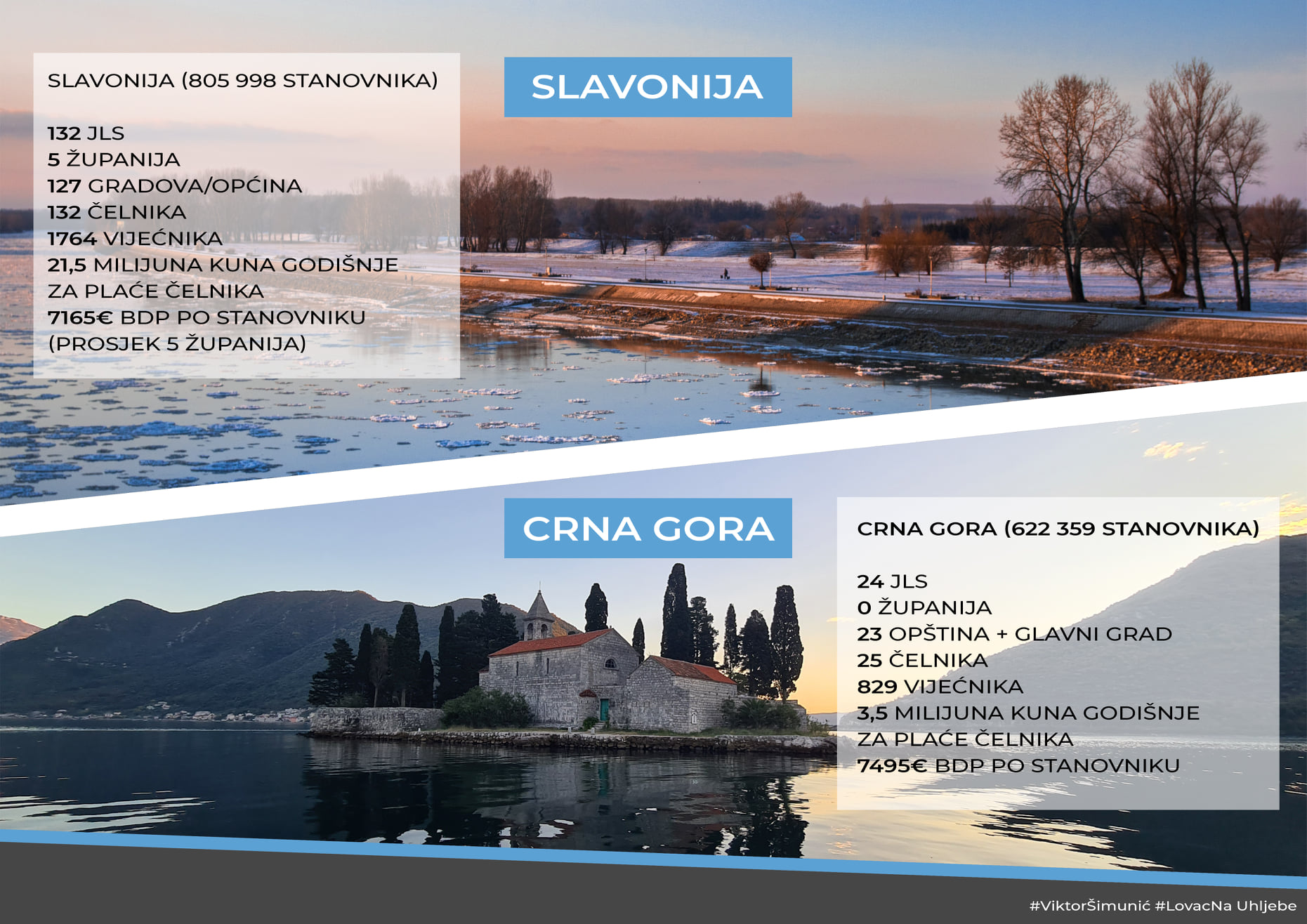
When I first learned the extent of Croatia's bureaucracy, I assumed that it was an ex-Yugoslav thing (which it is in part), except that it seems that Croatia rapidly expanded its bureaucracy after independence, and it is now much more bureaucratic than its neighbours and former fellow republics.
Simunic has been doing a little research comparing Croatian bureaucracy to other places, then posting his findings on Facebook. His latest was a look at the number of people it takes to run Slavonia compared to Montenegro, which he visited recently at his own cost in order to gather the information. Slavonia's official population of 805,988 has been sharply reduced since the 2011 census, with estimates that the current number is closer to 700,000, a little more than the whole population of Montenegro.
Administratively, it is in a different hemisphere, with a total of 132 local self-government units (compared to 24 in Montenegro), 5 counties, 132 local leaders and 1,764 councillors (compared to 25 local leaders in Montenegro, and 829 councillors). The annual cost of paying the Slavonian administration is a cool 21.5 million kuna a year, compared to just 3.5 million kuna in Montenegro.
Quite a potential saving.
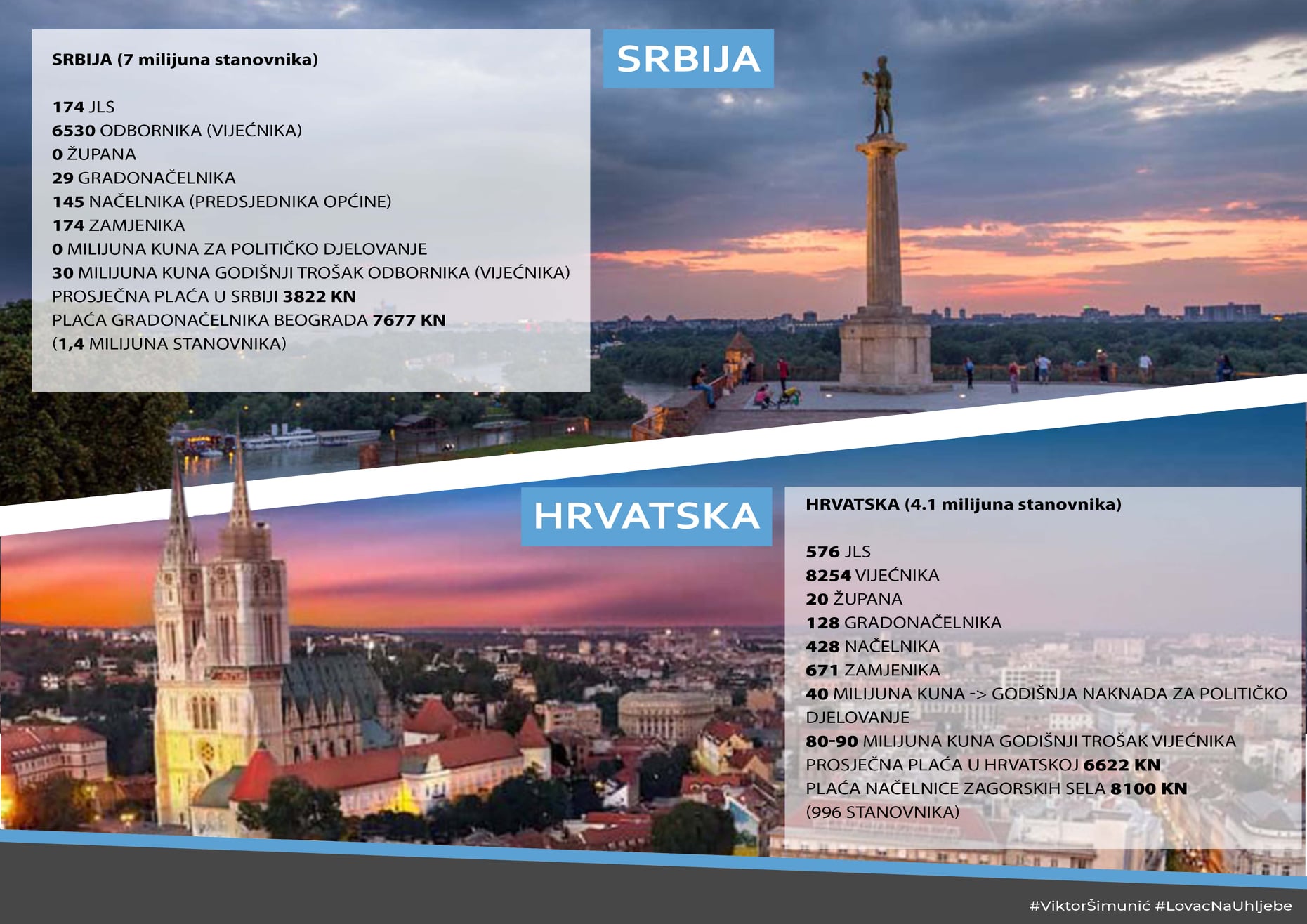
Another former Yugoslav republic, and a larger one - Serbia - appears to be much more efficient in administering its 7 million inhabitants, with just 174 local self-administration units compared to Croatia's 576. Salaries in Serbia are lower than Croatia in general, but who would have expected that the average salary of a mayor of a village in Zagorje (average population 996) would be less than the Mayor of Belgrade, population 1.4 million?
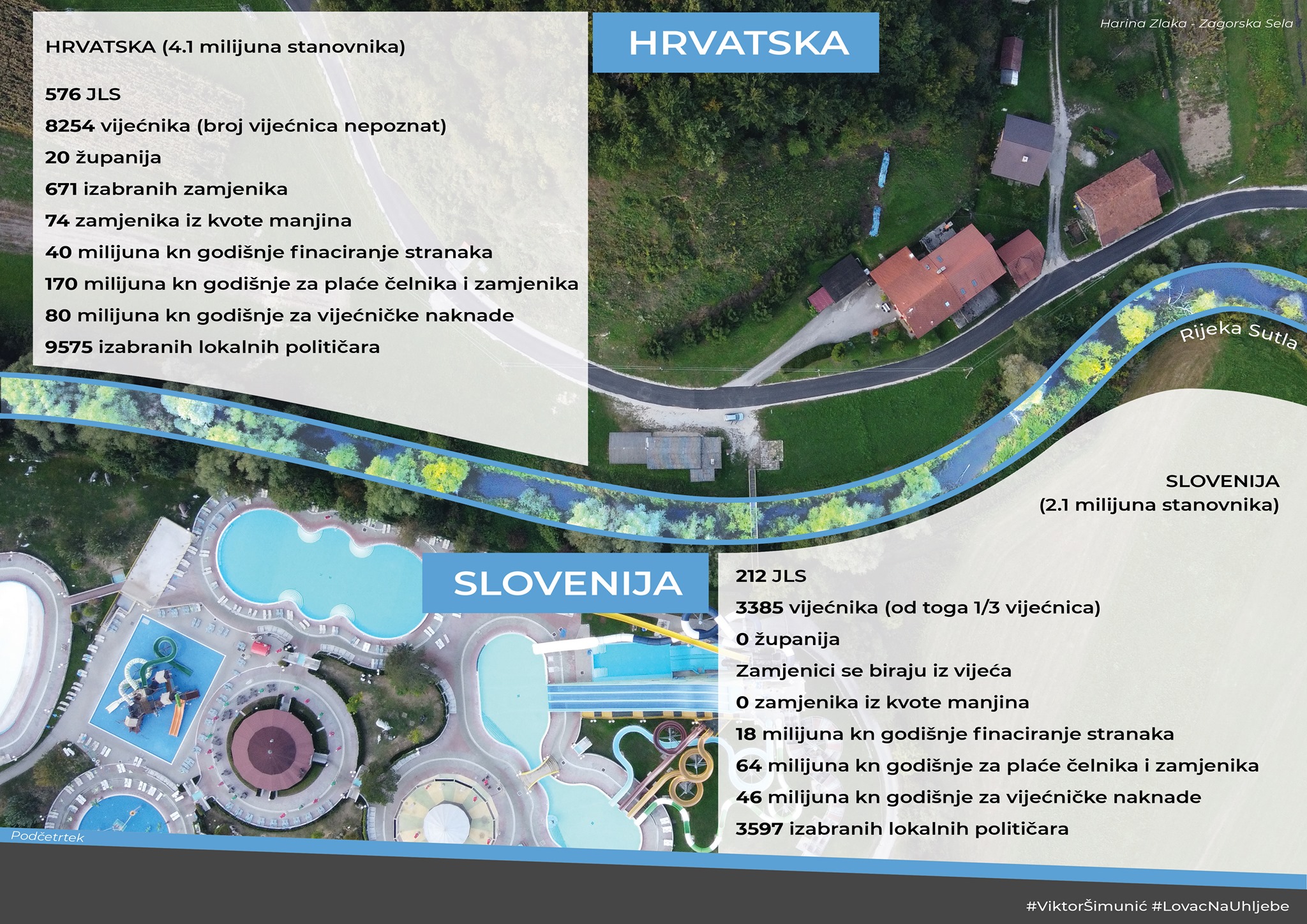
Slovenian is another former-Yugoslav republic, which is about half the population of Croatia and with higher salaries. Administratively it needs much less than that half to run the local administrations, both in terms of money spent and political representatives.
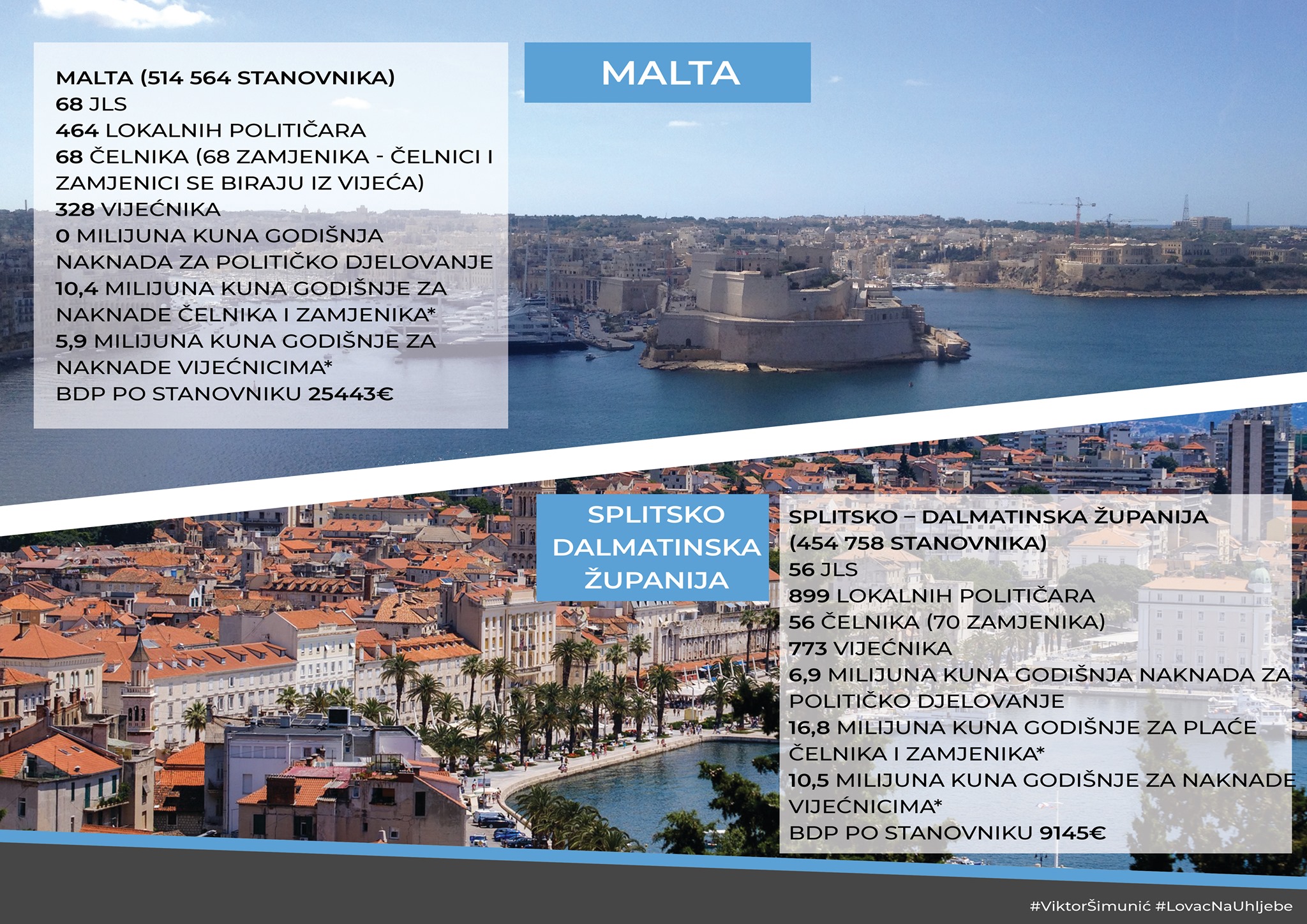
Simunic also made did some research comparing Croatian bureaucracy with other parts of Europe. The populations of Malta and Split-Dalmatia County are quite similar, Malta being slightly larger. While Malta has slightly more local self-government units (68 v 56), it needs considerably less paid help to run them 860 officials at an annual cost of 16.3 million kuna, compared to Split-Dalmatia County's 1,728 officials which cost 34.2 million kuna.
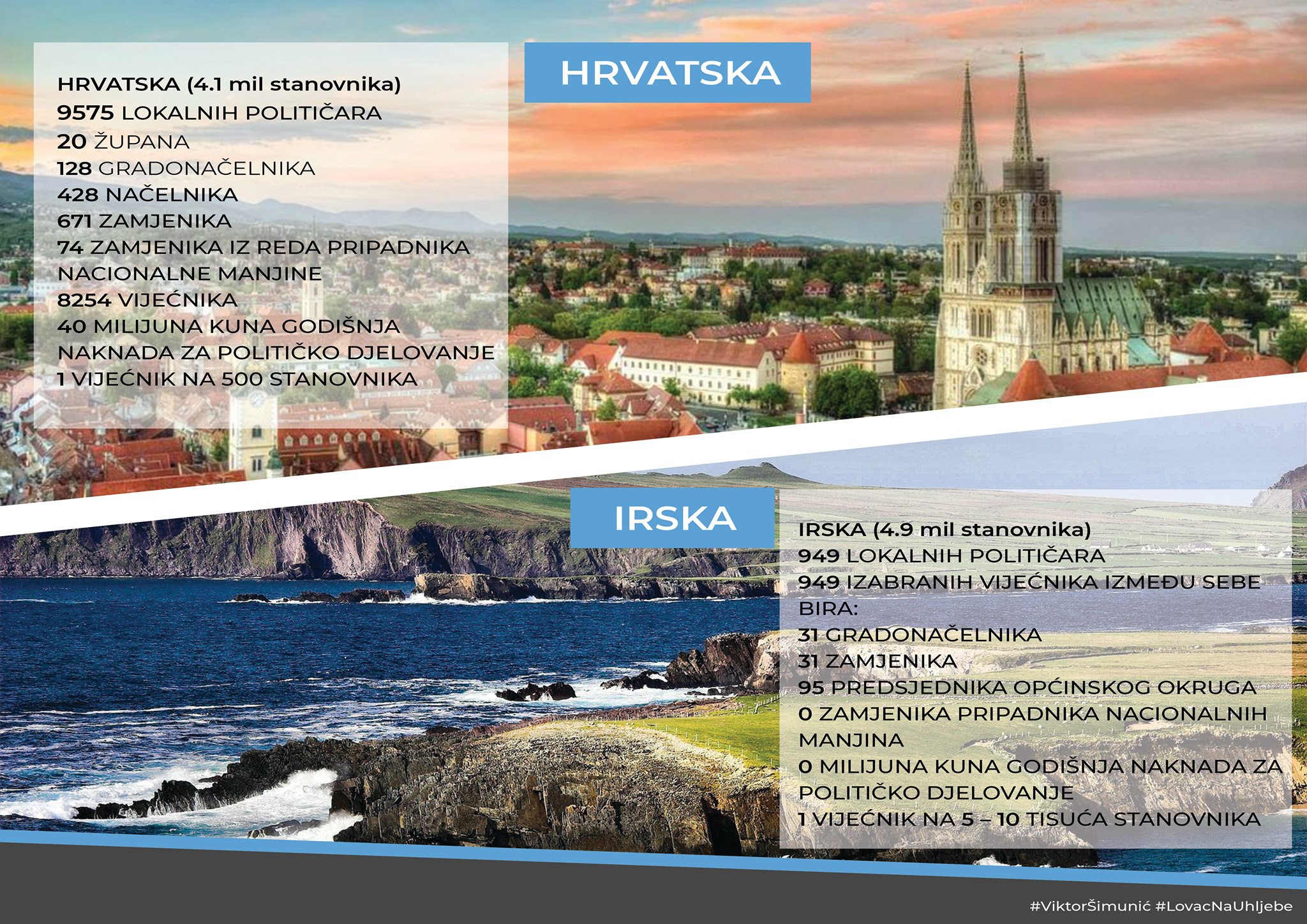
Is the grass greener in Ireland, as so many Croatians who emigrated there hoped it would be? It would seem that - at least administratively - it is. Just 2,057 local politicians required to look after the 4.9 million inhabitants, compared to 9,575 in Croatia.
Or, to put it a little clearer, one councillor per 5-10,000 inhabtiants, compared to the Croatian ratio of just 1 - 500.
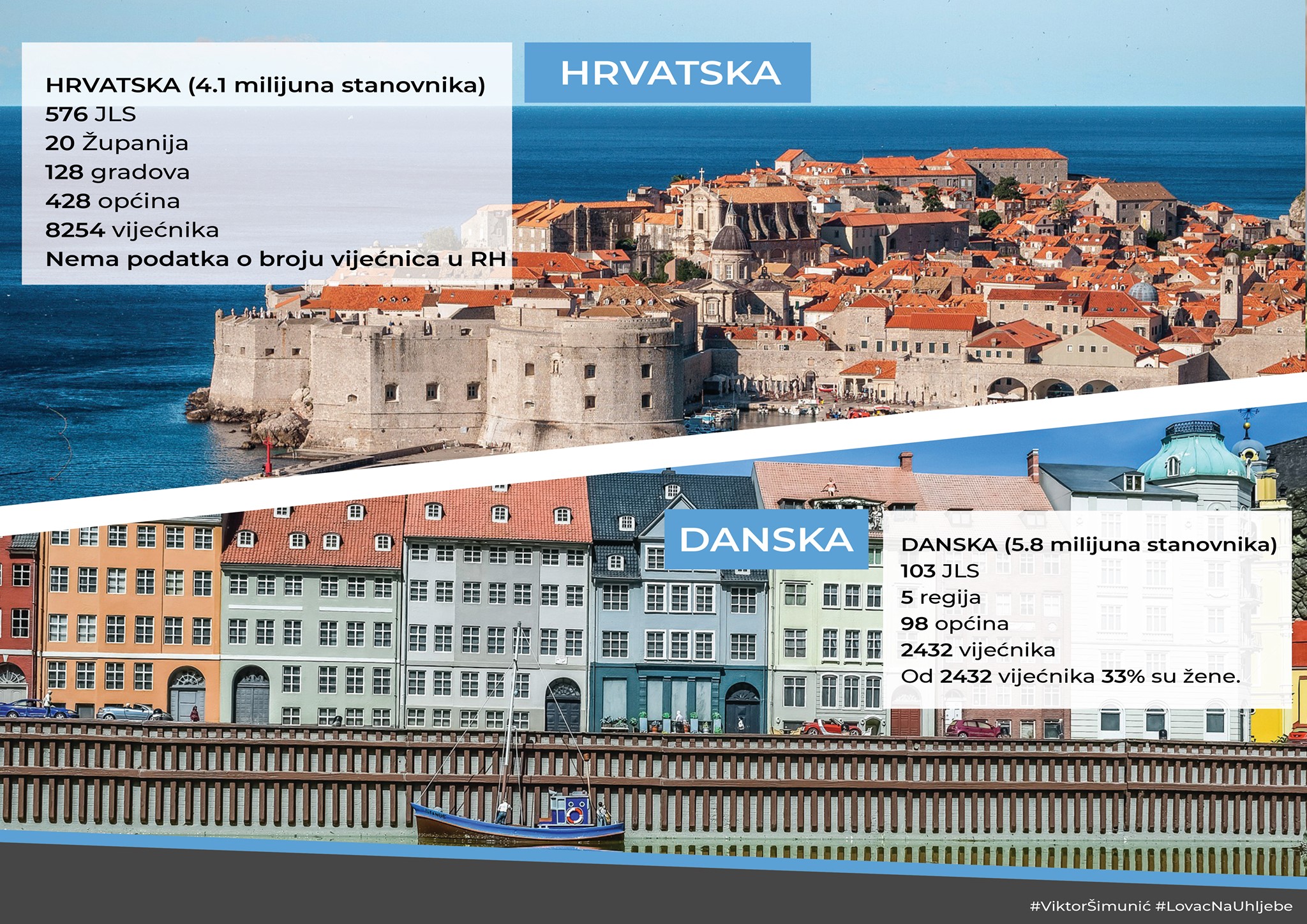
And the final model to compare for now - Denmark, with a larger population of 5.8 million. Just 5 regions, 103 local self-administration units, 98 municipalities, and 2,432 councillors, of which 33% are women.
Winter is coming, as are the cutbacks. Will common sense prevail in The Beautiful Croatia? Some easy and sensible savings from a bloated and inefficient bureaucracy, already costed out in the report above? In a country where there are 319 local tourist boards but nobody available to answer tourist emails, don't bet on it.
You can follow the research of Viktor Simunic on Facebook.


